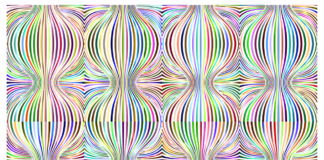Aphantasia is a unique and relatively rare cognitive condition characterized by the inability to voluntarily visualize mental images. Individuals with aphantasia do not experience the “mind’s eye,” meaning they cannot summon visual images of objects, people, or scenes in their mind. This condition, though it may seem subtle, has significant implications for how affected individuals process information, recall memories, and engage in creative activities. The term aphantasia was first coined by neurologist Adam Zeman in 2015, following a study that revealed this phenomenon’s existence and its effects on people’s daily lives. The discovery of aphantasia has sparked considerable interest in the neuroscience and psychological communities, leading to ongoing research into how visual imagery works and its role in cognition and perception.
Aphantasia is more than just an absence of visual imagination; it impacts various cognitive functions. People with aphantasia often find it challenging to perform tasks that require visual memory, such as recalling the face of a loved one, picturing scenes from a book they’ve read, or even visualizing a route on a map. Despite these challenges, individuals with aphantasia frequently develop alternative strategies to compensate for their lack of mental imagery. They might rely more heavily on verbal descriptions, logical reasoning, or other sensory experiences. The condition of aphantasia, therefore, opens a window into the diverse ways humans experience and process the world around them. It highlights the brain’s adaptability and the different paths it can take to achieve similar outcomes, despite variations in cognitive capabilities.
The history of aphantasia is intriguing, as it reveals how the understanding of human cognition has evolved over time. For centuries, philosophers and scientists have debated the nature of mental imagery. In the 19th century, Sir Francis Galton conducted one of the first studies on mental imagery, asking people to describe the vividness of their mental pictures. His findings hinted at the variability in people’s ability to visualize, laying the groundwork for later research. However, it wasn’t until Zeman’s study in the early 21st century that aphantasia was formally recognized and defined as a distinct condition. Zeman’s research involved patients who reported an inability to visualize following brain injury, which led to a broader investigation into congenital aphantasia – a lifelong condition not caused by brain trauma.
Understanding aphantasia involves delving into the mechanics of mental imagery and how it is typically generated in the brain. The process of visualizing involves the cooperation of various brain regions, including the visual cortex, which processes actual visual input, and the frontal cortex, which is involved in higher-order functions like memory and imagination. In individuals without aphantasia, these regions interact to create vivid mental images. However, in those with aphantasia, there appears to be a disconnect or reduced activity between these regions, resulting in the inability to produce mental imagery. Neuroimaging studies have shown that people with aphantasia exhibit different patterns of brain activation when asked to visualize objects compared to those without the condition. These findings are crucial for developing a deeper understanding of how mental imagery is formed and why it may be impaired in aphantasia.
The implications of aphantasia extend beyond personal experience to areas such as education, professional performance, and even therapeutic practices. In educational settings, students with aphantasia might struggle with subjects that heavily rely on visualization, such as geometry or visual arts. Teachers and educators can benefit from being aware of aphantasia and adopting inclusive teaching methods that do not depend solely on visual aids. Similarly, in professional environments, individuals with aphantasia may gravitate towards roles that align with their strengths, often excelling in analytical and logical tasks rather than those requiring visual creativity. Recognizing aphantasia can also inform therapeutic practices. For instance, therapies that use visualization techniques, such as certain forms of cognitive-behavioral therapy (CBT) or guided imagery, might need adaptation for individuals with aphantasia to ensure effectiveness.
Aphantasia also influences the creative process, particularly in fields like writing, art, and design, where visualization is often a key component. While it might seem that aphantasia would be a significant impediment in these areas, many individuals with the condition find unique ways to harness their creativity. Writers with aphantasia might focus more on dialogue and plot structure rather than descriptive imagery. Artists might use different techniques, such as working directly from real-life references or focusing on abstract forms instead of realistic representations. The diversity of creative expression among people with aphantasia underscores the idea that creativity is not solely dependent on mental imagery but can emerge from a variety of cognitive processes.
Personal accounts of aphantasia provide valuable insights into how the condition affects daily life. Many people with aphantasia only discover their condition when they learn that others can visualize images in their minds. This realization can be surprising and sometimes disconcerting. Despite the differences in cognitive experience, people with aphantasia often report leading fulfilling lives, finding alternative ways to engage with the world. Some describe their thought processes as more verbal or conceptual, relying on a strong inner dialogue or abstract reasoning. These adaptations highlight the brain’s remarkable plasticity and its ability to compensate for different cognitive styles.
The exploration of aphantasia has also led to a broader discussion about the nature of human experience and consciousness. The condition challenges the assumption that visual imagery is a universal aspect of thought. It raises questions about how different cognitive processes contribute to our perception of reality and how diverse experiences shape our understanding of the world. Aphantasia serves as a reminder of the variability of human cognition and the need to consider these differences in our approaches to education, therapy, and everyday interactions.
Research into aphantasia is still in its early stages, but it holds the promise of uncovering new insights into the workings of the human brain. Future studies aim to better understand the neural mechanisms underlying aphantasia, how it develops, and its prevalence in the population. Researchers are also interested in exploring the potential genetic and environmental factors that contribute to the condition. As our understanding of aphantasia grows, it may also shed light on related phenomena, such as hyperphantasia – the condition of having extremely vivid mental imagery – and other variations in cognitive functioning.
In conclusion, aphantasia is a fascinating condition that reveals the diversity of human cognitive experiences. It challenges traditional notions of imagination and visualization, offering a unique perspective on how the mind works. The study of aphantasia not only enhances our understanding of mental imagery but also highlights the adaptability and resilience of the human brain. As research continues, we can expect to learn more about the neural basis of aphantasia, its impact on daily life, and the ways in which individuals with the condition navigate the world. This knowledge will contribute to a more inclusive and nuanced understanding of cognitive diversity and the many ways in which people experience and interpret reality.














